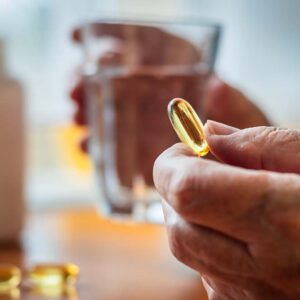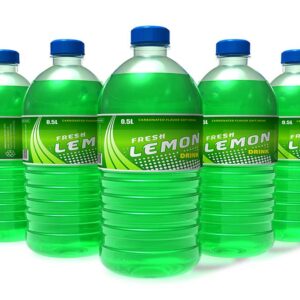
[ALERT] Are You Breathing in CANCER?
It goes without saying that air pollution is bad for you.
It STARTS with your lungs, harming your respiratory health. But the damage from breathing in that toxic air certainly doesn’t STOP there.
In fact, as I explained recently when the Canadian wildfires left much of the United States blanketed under a toxic haze, air pollution is linked to all kinds of unexpected health complications, from heart troubles to fungal infections.
But now researchers have uncovered a startling new link between air pollution and two potential killers. And seniors may face the BIGGEST risk.
The damage that air pollution does to our lungs is well documented. But toxic air does far more harm than just cause respiratory problems.
New research published in the journal Environmental Epidemiology revealed a strong link between air pollution and colorectal and prostate cancers. Links to breast and endometrial cancers were seen as well.
These risks could apply to anyone, but the study focused on folks 65 and older.
In light of this new research, you should know two alarming facts about air pollution.
- Around 36 percent of Americans live in areas where air pollution is a problem, exceeding acceptable exposure levels set by national standards.
- The link between air pollution and colorectal and prostate cancers was seen even in places that DON’T have high levels.
In other words, we’re ALL at risk.
We’ve known for a long time that air pollution can raise the risk of lung cancer, but this study is a sobering reminder that we need to be concerned about FAR more than our lung health alone.
Researchers theorize that harmful particles in the air that are tiny enough to pass directly into the bloodstream and eventually reach the prostate and colon. Once there, they can trigger cancer growth.
(For more details on the tiny air pollution particles called particulate matter, check out my earlier report on wildfire smoke HERE.)
Now, you might be throwing your arms up in exasperation at this point. After all, what can YOU do about your exposure to air pollution, right?
Trust me, I get it. But the good news is you can do a LOT more than you may think.
- Many online sites that monitor air quality. I like one called PurpleAir. They sell air quality sensors but make their air pollution data freely available to everyone. Plus, there are air quality apps for your smartphone that provide local and current conditions. On days when the air quality isn’t good, don’t go outside any more than you have to.
- Don’t exercise when the air quality is bad (ESPECIALLY outdoors). If you can’t bear skipping a workout on those days, do it first thing in the morning.
- Fix up your house so that it doesn’t let good air out and poor air in. Check for and seal gaps around doors and windows. If you can smell smoke on days when there are wildfires, your doors and windows are leaky.
- Stock your pantry and freezer to have enough food on hand for poor air quality days.
- If you HAVE to be outside on high air pollution days, consider wearing an N-95 mask.
These simple steps alone could slash your exposure and reduce your risk for these killer cancers.
P.S. If you’re like most folks, you spend 90 percent of your day indoors. But in many cases, indoor air pollution can be worse than what you face outside. CLICK HERE to find out what you can do to fix it.
Source:
Wei Y, et al. “Additive effects of 10-year exposures to PM2.5 and NO2 and primary cancer incidence in American older adults.” Environmental Epidemiology. 2023;7(4):e265. doi:10.1097/EE9.0000000000000265
Written By Dr. Scott Olson, ND
Nearly 25 years ago, failed mainstream medical treatments left Dr. Olson in constant pain – and his health in ruins. And that’s when he did something REVOLUTIONARY. He began his career in medicine – and dedicated his life to uncovering the true, underlying causes of disease.
Through his innovative medical practices in Tennessee and Colorado, Dr. Olson has helped cure countless seniors from across America of arthritis… heart disease… diabetes… and even cancer. All without risky prescription drugs or painful surgeries.
View More Free Articles
The Hidden Dangers of Fried Foods
It’s no wonder French fries are so popular. They’re crispy, salty, and oh-so-satisfying. As a matter of fact, as I wrote the words “crispy” and “salty” just now, my mouth watered. I’m only human, after all. But brace yourself—because what I’m about to share will make you think twice before diving into your next serving...
Losing Your Locks? The SURPRISING Solution
There’s no way to sugarcoat it. Losing your hair sucks. The hit to your self-esteem is no joke. You might even find yourself avoiding mirrors and hoarding hats. The treatment options are limited, often come with a laundry list of side effects, and deliver results that are about as predictable as a coin flip. It’s...
REAL Drug-Free Back Pain Relief
Recently, I’ve had several exasperated people ask me, “Is back pain something I just have to live with?” I battled chronic back pain for years, so I completely understand why some folks feel so hopeless about finding relief. In fact, I used to think I was doomed to a life of pain and limitations, too....
Mailbag: When to Worry About Memory Lapses
“I’ve been experiencing some memory lapses recently, and I’m worried it might be early signs of Alzheimer’s disease. My mother also had it. What symptoms should I look out for?” – Ann Hi Ann, It’s important to recognize that some degree of memory loss is a normal part of life. Our brains constantly process and...
The Unforeseen Link Between Your Gut and Your Waistline
As the weather warms up and summer approaches, many of us start thinking about shedding those extra pounds… We dust off our gym memberships, stock up on salad greens, and vow to finally fit into those shorts from last year. But what if I told you that the key to achieving a healthy weight might...
Defy Aging with the Sunshine Vitamin
If there’s one thing you absolutely must do for your health, it’s to maintain healthy vitamin D levels. I can’t stress this enough. And if you think vitamin D is only good for beefing up your bones, think again. Because while vitamin D is crucial for maintaining healthy bones, recent research has revealed that this...
Detox Your Drinking Water with a Microplastics Purge
We’re surrounded by plastics. They’re everywhere, from the obvious plastic shampoo bottle to the not-so-obvious clothing on our backs. From the moment we get up in the morning until we slide beneath the sheets at night, we are in contact with them. Heck, some bedsheets contain plastic fibers, so you may ALSO be exposed while...
The TRUTH About Word Finding Troubles
Picture this. You’re having a lively conversation with a friend, and suddenly, find yourself grasping for a word that’s just out of reach. You KNOW it’s in there somewhere, hiding in the recesses of your mind. But no matter how hard you try, you can’t seem to pin it down. When you have trouble word...
FDA Finally Admits “BANNED” Soda Ingredient is Unsafe
I’m not a soda fan for MANY reasons. I wrote an entire book on the dangers of sugar, for example. And research links soda drinking to fatty liver disease, heart disease, high blood pressure, diabetes, obesity, and Alzheimer’s. And the diet stuff is no better. Fake-sugar-filled diet sodas cause “metabolic confusion,” and artificial sweeteners are...
Discover WHY We Accidentally Overeat (and How to Stop)
Picture this… You finish eating a nice meal feeling just fine. But then, 20 minutes later, you’re groaning and clutching your belly because you feel uncomfortably stuffed. If this sounds familiar, you’re in good company. Most of us have had this happen. Science reveals why accidental overeating occurs… and what we can do to avoid...









